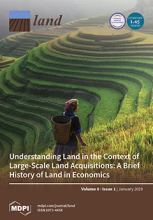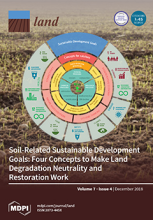Land Library
Welcome to the Land Portal Library. Explore our vast collection of open-access resources (over 74,000) including reports, journal articles, research papers, peer-reviewed publications, legal documents, videos and much more.
/ library resources
Showing items 1 through 9 of 16.Over the past several decades, land investments have dramatically increased to meet global food and biofuel demands, produce industrial commodities, protect environments and develop urban centres.
Foreign land grabbing is acknowledged as a phenomenon that generates disempowerment and dispossession of local farmers, human rights violations. Previous studies have revealed the lack of ethical benchmarks in foreign large-scale land transactions that raise moral concerns.
More than a decade has passed since the triple crises of food, energy and finance in the period 2007–2008. Those events turned global investor interest to agriculture and its commodities and thereafter the leasing of tens of millions of hectares of land.
Land acquisition often involves power and displacement and can be carried out on a large scale. There are many forms of land acquisition, including for environmental and conservation purposes as well as for production activities.
Global climate change policy enforcement has become the new driving force of resource grabbing in the context of the “scramble of resources” in Africa. Nevertheless, the environmental crisis should not be seen as an isolated phenomenon amid contemporary capitalism.
We examine collaborations between the state and civil society in the context of land grabbing in Argentina. Land grabbing provokes many governance challenges, which generate new social arrangements.
Recent debates in social anthropology on land acquisitions highlight the need to go further back in history in order to analyse their impacts on local livelihoods.
In economics, land has been traditionally assumed to be a fixed production factor, both in terms of quantity supplied and mobility, as opposed to capital and labor, which are usually considered to be mobile factors, at least to some extent.
Cambodia has become a principal target of transnational (and domestic) land grabs over the past decade, mostly in the form of economic land concessions (ELCs). The northeastern part of the country—where the majority of Cambodia’s indigenous people reside—is a particular hotspot.







